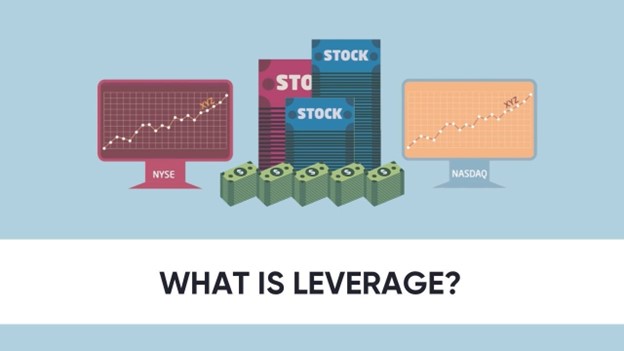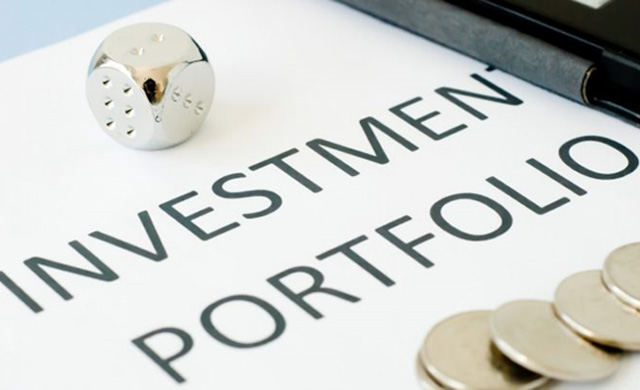Trading using leverage has been happening for a very long time, long before cryptocurrencies were ever formed. On the other hand, this high-risk trading strategy has been shown to have a disproportionately large impact on the pricing of digital assets. Some detractors of cryptocurrencies believe that leverage trading is one of the primary factors contributing to the erratic price action connected with cryptocurrencies.

Many cryptocurrency exchanges continue to provide traders with access to the leverage trading function, despite the criticism that surrounds this type of trading. Before becoming involved with crypto leverage trading, users need to make sure they have a thorough understanding of the hazards connected with this technique.
What exactly is the term “leverage trading”?
Leverage trading refers to the practice of borrowing more cash to raise the size of a position, and it does not matter what market a trader is participating in. Imagine if the exchange where you are trading is providing you with a loan that instantly adds more money to your account. This is what leverage in crypto trading is.
The fact that cryptocurrencies are traded in crypto leveraged trading rather than regular markets’ leveraged trading is the only distinction between the two. Customers of cryptocurrency trading platforms that provide leverage trading typically have the ability to expand the size of their position while trading Bitcoin (BTC) and other large-cap altcoins like Ethereum. (ETH).
When taking a leveraged position in cryptocurrency, an investor has to have a strong conviction that the value of a digital asset will rise or fall within a certain period of time. If the transaction is successful, a person’s earnings will be multiplied significantly due to the use of leverage. On the other hand, given that this leverage comes in the form of a loan, the repercussions of the deal not going as planned are significantly increased. A trader runs the risk of losing all of their cash if the price of a digital asset goes in the opposite direction of the one they initially gambled on.
How to use leverage while trading cryptocurrency
Cryptocurrency leverage trading usually includes taking out a loan, but the amount that a trader is allowed to borrow varies from exchange to exchange. There are numerous different approaches that traders may use to tailor their cryptocurrency leverage trade to their own levels of risk tolerance.
A ratio is frequently used to represent the amount of leverage that can be taken out by an individual. A person’s stake in a cryptocurrency trade, for instance, will increase by a factor of ten if they choose a leverage ratio of 1:10. It’s fascinating to see that certain cryptocurrency exchanges provide leverage ratios of 1:100 or even greater!
The initial step in opening a leverage trade is to fund your trading account with either fiat currency or cryptocurrency. The amount of leverage that you are permitted to acquire is directly proportional to the amount of collateral that you provide.
When it comes to obtaining leverage, the margin requirements for various cryptocurrency exchanges are distinct from one another. The amount of collateral that must be kept in your account in order to maintain an active leverage position is referred to as the margin. During the deal, the cryptocurrency exchange has the legal right to take possession of your collateral if the margin requirement does not satisfy the parameters that were agreed upon. (or liquidation).
Example
Let’s look at an example to better demonstrate these principles because it always helps.
Let’s say you wish to open a trade with a leverage of five times on Bitcoin. You will start by making the necessary deposit onto your cryptocurrency exchange, followed by the loan request. If you made a collateral deposit of $5,000, a leverage position that gave you five times that amount, or $25,000, would be available to you.
Keep in mind that the price of Bitcoin changes five times more with a five times leverage loan than it does on the spot market. Therefore, a rise in Bitcoin’s price of $100 would result in a profit of $500 for you. It is also possible for it to go in the other direction. If the price of Bitcoin declines by $100, your loss will be $500. This indicates that the price of Bitcoin does not need to go to zero for a leverage trader to lose all of the money they have invested in the transaction. If the price of Bitcoin continues to fall, it will eventually reach a point where a leverage trader will have no funds left in their account. Leverage can boost a trader’s profits, but it also raises the risk that they could lose all of their capital if the price of the asset they are trading drops.
You are free to close your leverage position whenever you choose; however, you must be mindful of the margin requirement. If the price of Bitcoin ever reaches a point where your account position exceeds the margin barrier, the cryptocurrency exchange would liquidate (also known as sell off) all of your funds in order to protect itself from potential losses.
Use Both Long and Short Positions to Your Advantage
Crypto traders have the ability to utilize leverage to wager on whether or not the price of a token will rise or fall. Those who think the value of a coin will increase in the future are said to have a long position, while those who think the price of a token is overdue for a correction will hold a short position.
Keep in mind that in order to initiate a leverage long or short position, you do not need to actually possess the underlying cryptocurrency. You are able to trade bitcoin even if you do not have any bitcoins in your account by using leverage. To initiate the opening of a leverage position, all that is required of you is to transfer the necessary collateral into your exchange.
Where Do the Dangers Lie?
Cryptocurrency leverage trading is not for investors who want to minimize their exposure to risk, despite the fact that this might sound like a disclaimer. This trading tool is not intended for use by those who are solely interested in keeping tokens for the foreseeable future. Cryptocurrency leverage trading should be avoided by anybody looking for a passive investing approach with a long-term horizon.
Because of the high degree of volatility they exhibit, cryptocurrencies are already regarded as one of the asset classes with the highest risk. Your risk is increased when you factor in leverage into the equation. In addition to this, the risk of individuals losing all of their money on a leverage trade is significantly higher in comparison to the risk associated with merely purchasing a token on an open market.
Even while each cryptocurrency has the potential to reach zero, traders who use leverage run the risk of losing all of their money even if a token just moves a few percentage points. If someone has bitcoins, they will still have purchasing power even if the price drops by 20%; however, a long BTC leverage trader may be forced to sell their position as a result of this move.
Keep in mind that the term “crypto liquidation” refers to the process by which the cryptocurrency exchange takes possession of your collateral in the event that you do not have the necessary margin in your account. A margin call is the common name for this type of situation.
You should receive warnings from the cryptocurrency exchange in the form of emails or push alerts when you are getting close to a margin call. If you choose to ignore these warnings, it is quite probable that you will blow through all of your savings. To prevent the account from being liquidated, you can nonetheless deposit further collateral to the account. Your margin needs will go up if you have additional collateral, but this might give you some extra time as you wait for a deal to be executed.
Even though crypto leverage trading is fraught with inherent danger, there are techniques that traders may use to estimate the extent of their potential losses. If a deal goes poorly for you, having these abilities in risk management will allow you to keep more of your money.
Speculators that use leverage while trading bitcoin should always analyze their risk to reward ratio. In other words, write down how much you want to make from a leverage position and how much you are ready to sacrifice in order to take advantage of it. When determining what price would result in a liquidation, it is important to take into account whatever margin requirements you have.
After identifying these price goals, leverage traders have the ability to put limit orders on their trading accounts to either restrict their losses or maximize their profits. Both of these orders will immediately sell their leverage position at the price that has been specified beforehand. The sole distinction between a stop-loss order and a take-profit order is that the former sells a position at a loss, while the latter sells at a profit.
Stop-Loss Orders vs. Take-Profit Orders
Traders that use stop-loss orders avoid being forced into liquidation. A stop-loss order ensures that the investor will not lose more than the predetermined amount of money in the event that a transaction goes against them. This protects them from the possibility of losing their whole position.
Take-profit orders, on the other hand, ensure that traders do not get overly greedy when they have a successful deal. This will become active right away if the price of a cryptocurrency increases to their objective, which guarantees that they will make a profit.
The acquisition of these abilities in risk management is essential for anyone who is considering trading on margin. Traders who do not feel confident enough to take on these dangers should limit themselves to the spot market for cryptocurrencies.
Why Do People Engage in Leverage Trading?
Increased price exposure to a cryptocurrency can be achieved through the use of leverage trading by investors. If their crypto trade is successful, their potential profit will be proportional to the amount of leverage they use. Because you don’t need a significant amount of capital to take out massive crypto holdings, leverage is an attractive choice for traders.
Remember that there is no way to forecast how future prices will move, despite the fact that effective leverage trading can result in increased profits for investors. Trading with leverage is particularly risky in the cryptocurrency market since the values of digital assets are subject to greater swings than the prices of equities or precious metals.
Where exactly does the trading of leverage take place?
The vast majority of crypto traders that make use of leverage do so on controlled exchanges. (CEX). At the time of this writing, the following are some of the most well-known cryptocurrency exchanges in the world that also provide crypto leverage services:
- Binance
- Redot
- Bybit
- Gate.io
- Kraken
- KuCoin
Because the margin requirements and token availability on each exchange are different, new users need to be sure that the cryptocurrency trading platform they choose meets their criteria. The fact that CEXs charge additional fees for leverage trading is something that should be brought to your attention. When contemplating the beginning of a leverage transaction, traders have to take these trading expenses into consideration.
Conclusion
The use of leverage in the trading of cryptocurrencies is a contentious topic at the moment. Even though leverage makes it simple for traders to have access to additional funds, it also increases the market’s degree of volatility. There is a strong correlation between the liquidation of huge numbers of cryptocurrency traders and the generation of big price spikes or drops.
If you start a leverage position, there is a good chance that you will lose all of your collateral. In addition, it would be helpful to examine limit order tactics such as stop-loss and take-profit orders in order to successfully manage the risk you are taking. For the purpose of avoiding a margin call, traders who use leverage should keep a close eye on their holdings at all times and enable price alerts.
At Worldcoin, we actively encourage investors in cryptocurrencies to learn as much as they can about purchasing, trading, and utilizing cryptocurrency in a secure manner. We want to accomplish this goal by giving out a portion of our cryptocurrency to each and every person on the earth without compromising their right to privacy or anonymity in the process. You may learn about the ins and outs of the cryptocurrency market by subscribing to our blog and reading about subjects such as cryptocurrency wallets, non-fungible tokens (NFTs), and two-factor authentication.

 Hot Features
Hot Features













